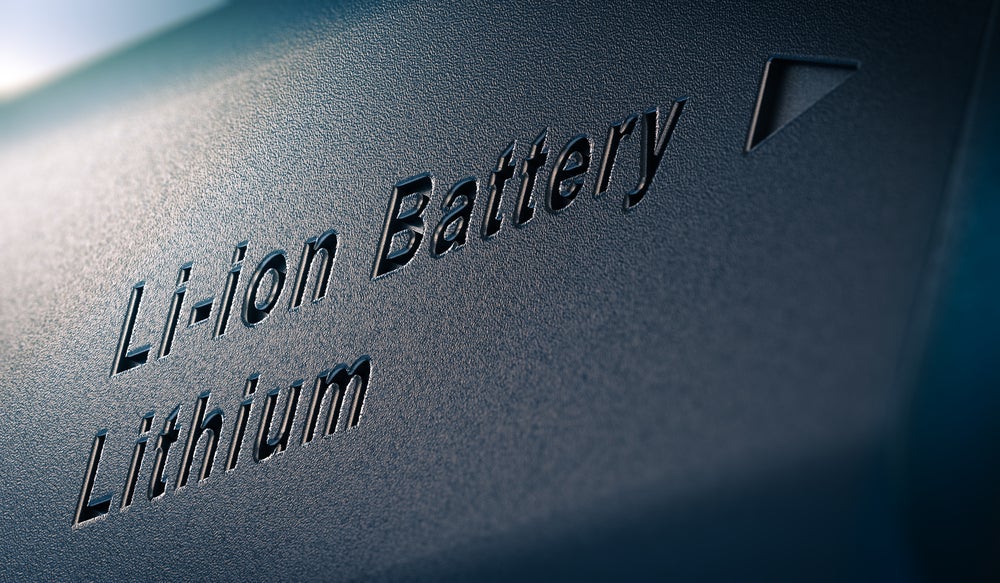Since the increase in the development of hybrid-electric and all-electric propulsions in the electric vehicle (EV), aerospace and defence industries, lithium-ion (Li-ion) batteries have been the go-to solution for battery technology. Li-ion batteries offer the highest specific energies of any technologies available to date, making them perfect for any situation where weight reduction is a major design consideration.
However, Li-ion batteries are subject to several limitations, which opens the door for possible alternative battery technology. Especially in the defence industry, there are some major cons associated with Li-ion batteries.
Sodium-ion battery (SIB) operation is entirely analogous to Li-ion, generating electricity via a chemical reaction. Both technologies have an anode, cathode, separator, and liquid electrolyte. However, the lithium compounds are replaced with sodium-based equivalents.
Sodium ions are both larger and roughly three times heavier than Li-ions, and as such fully optimised SIBs remain incapable of matching the specific energies of their lithium-based equivalents. Contemporary Amperex Technology’s (CATL) leading SIB offers a specific energy of 160Wh kg-1 compared to the estimated 272-296Wh kg-1 offered by Tesla’s revolutionary 4680-type battery cells.
Due to this technical limitation, SIBs are ill-suited for applications in military aircraft design as weight is a serious concern. However, there remain opportunities for applications in areas where system weight is not such a limiting factor.
A major benefit of SIBs is their low price point, owing to the cost of raw materials ($150 per tonne of sodium vs $20,000 for lithium) and the absence of cobalt, a material often sourced from mines in the Democratic Republic of Congo and is rife with human rights violations. UK-based SIB manufacturer Faradion estimates that SIBs will cost approximately 30% less to produce than conventional Li-ion technologies.

US Tariffs are shifting - will you react or anticipate?
Don’t let policy changes catch you off guard. Stay proactive with real-time data and expert analysis.
By GlobalDataFurthermore, SIBs are safer than their Li-ion counterparts due to their increased level of thermal stability. Li-ion cells left at below 30% charge for extended periods of time risk becoming thermally unstable while repeated full charging cycles can lead to thermal runaway and electrical fires.
In contrast, SIBs are stable and nonflammable due to their water-based rather than organic electrolyte-based composition and are less susceptible to temperature changes. SIBs can be shipped anywhere at 0V, being essentially a ‘bag of electrolyte’ without safety/fire concerns. Faradion demonstrated this by fully charging one of its sodium-ion cells and then drilling a hole straight through it without causing a fire or overheating.
The increased operating temperature window of SI versus Li-ion may prove a critical advantage in industries concerned with extreme applications. Operating LI-ion batteries below freezing temperatures causes a large reduction in electrical performance and discharge rate in contrast to SIBs, with Faradion reporting its ‘sodium-ion cells have demonstrated performance (90%) over the temperature range -20°C to 60°C’. This provides obvious logistical benefits for operations in arctic or sub-zero temperatures.
Chinese battery manufacturer CATL has also demonstrated battery packs that incorporate both Li-ion and sodium-ion cells, a combination which it is hoped will improve cold weather performance in EVs by maintaining consistent energy performance for longer.
Other noteworthy benefits include strong cycle life (Faradion’s 160Wh kg-1 cells have demonstrated a cycle life of over 4,000 cycles, compared to Tesla batteries’ 1,500 cycles), and rapid charging capabilities (CATL’s cells can charge to 80% in 15 minutes).
However, despite the various technical benefits provided by SIBs, the main barrier to widespread adoption in the car industry remains range anxiety, with concerns revolving around the length and frequency of battery recharging. Coupled with other limitations, there seems to be no short-term future for sodium-ion-powered EVs within the defence sector.
Nevertheless, sodium-ion-specific companies Faradion and Natron Energy are initially focusing on the stationary energy storage market. As armed forces cannot completely rely on electrical grids to charge or power their equipment during operations, portable energy management solutions are a strategic imperative.
This requirement is driving demand for cheap, efficient and safe stationary storage and thus provides a critical area of application for SIB technology in the short to mid-term.
Natron recently announced a strategic investment with Chevron to support the development of SIB stationary energy storage solutions for future EV charging stations while United Airlines’ investments revolve around utilising Natron’s batteries to electrify their ground operations.
It is important to consider other potential alternatives to current Li-ion batteries beyond SIBs, with research into technologies such as solid-state cells, molten salt cells and lithium air-based solutions driving these parallel fields of development.
In conclusion, whilst there have been a couple of specific examples of EV manufacturers adopting sodium-ion technologies in their vehicles, these remain limited to niche applications and thus cement stationary charging and storage as the primary applications for SIB technology in defence.
The practicality of these applications will hinge on the defence industry’s willingness to adopt all-electric or hybrid-electric propulsion within their vehicle fleets over the coming decades. As concerns over energy sustainability and supply chain vulnerability continue to drive the electrification of the defence market, sodium-ion technology may still have a future in it.






